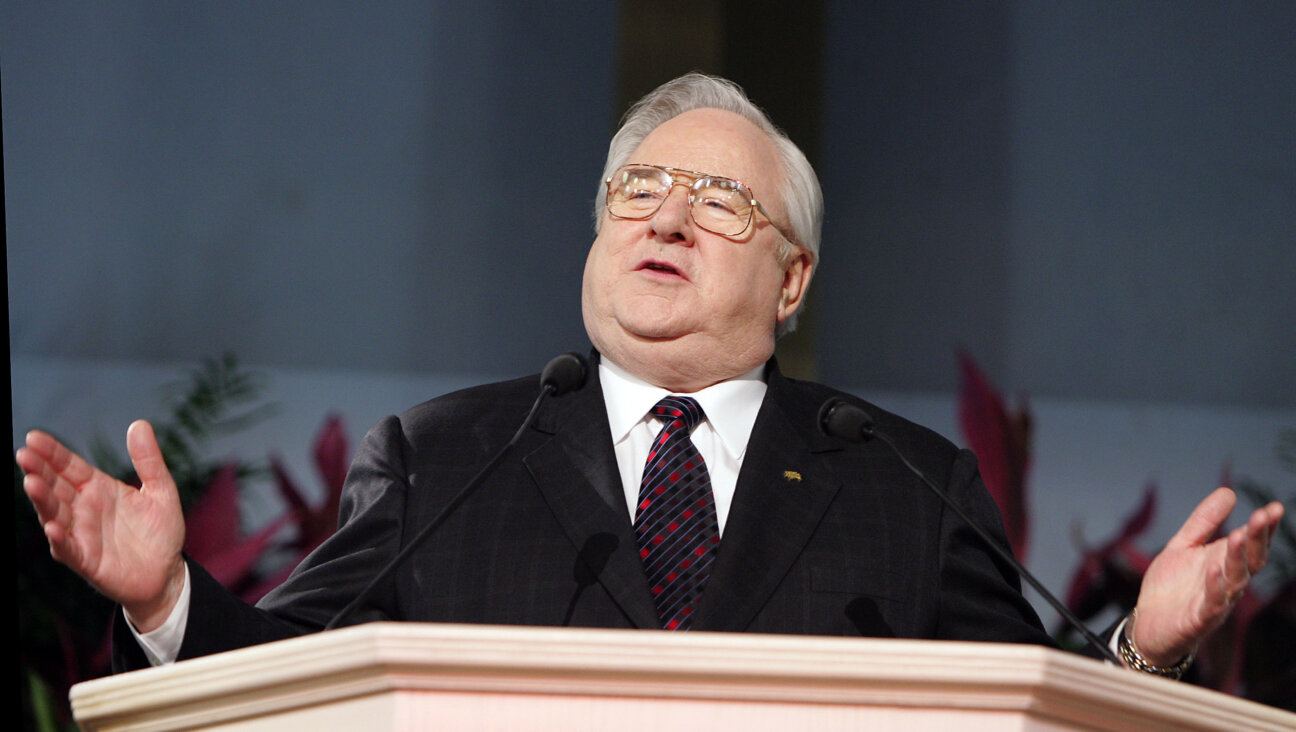Film Examines Court Jews Who Dominated Basketball
In Miami there are men whose memories burn with images of athletic glory long-relegated to private collections of black-and-white news reels — images of swooping majestic passes back and forth, baskets swishing with grace, running up and down a court of giants. These men possess the story of how Jewish Americans, most of them the children of immigrants, virtually dominated the game of basketball in the 1940s and laid the groundwork for the worldwide cultural phenomenon that is today’s National Basketball Association.
For the past three years, David Vyorst has devoted his life to crafting a documentary film about these trailblazers and their progeny. Vyorst’s work-in-progress film, “The First Basket,” traces the history of Jews in basketball through interviews with Jewish greats past and present like Sonny Hertzberg, Ossie Schectman, David Stern and Red Auerbach, as well as the exhaustive excavation of private highlight collections. The title of the film is no obtuse metaphor; in 1946, Ossie Schectman did indeed score the first basket of the Basketball Association of America, which later evolved into the NBA.
“To them, basketball was the greatest thing in the world,” Vyorst said. “When they talk about their basketball memories, their faces light up.” The Jews who played in this primordial incarnation of professional basketball perfected their skill as teenagers for teams based out of synagogue centers, YMHAs and settlement houses, for leagues based in New York City and along the Borscht Belt. When they weren’t playing on real courts, they were playing in the streets, transforming fire escapes into makeshift hoops and using rolled-up laundry as basketballs. Colleges were stocked with Jewish players, as well — even St. John’s proved to be no exception. In one memorable instance, the St. John’s coach prepared to lead the team in a Christian pre-game prayer, before looking around and realizing that his entire starting five was Jewish.
The players were targets of antisemitism, though not as frequently as one might imagine. “They dealt with it mano a mano, by punching a guy in the nose,” explained Yeshiva University’s Professor Jeffrey Gurock, the film’s chief academic adviser. At times, opponents would pull and push at their noses, and crowds would label spectacular plays merely products of Jewish trickery. Sportswriters got in on the act, too, declaring that the game naturally fit the Jew’s duplicitous nature. However, Gurock asserts that on the whole, the antisemitism was rather muted.
Plus, as Hank Rosenstein, a Knicks player in the 1940s, told Vyorst, “Basketball was our religion.” Other players interviewed by Vyorst echoed this sentiment. The best players came to play, not to learn about Judaism. Nevertheless, the game engendered camaraderie among the Jewish players. This seemingly paradoxical relationship, in which Jews came to play and become American but became more Jewish just as they were becoming more American, cuts to the essence of what basketball meant to postwar Jewish America. “It’s a very American game, and yet it’s a transition game,” Vyorst explained. Thus, basketball was a means of assimilating into the society while simultaneously preserving and even enlarging one’s Jewish heritage. As Gurock sees it, once Jews migrated out of the inner city and into the suburbs, thereby completing the transition, the quality of Jewish play declined precipitously. “Basketball is essentially an inner-city game,” Vyorst said.
“The First Basket,” due to be completed this upcoming winter, will likely not cause a reverse migration from the suburbs back to the city. But as Vyorst noted jokingly, Jewish parents always will be accepting of their children’s basketball aspirations — just so long as it doesn’t interfere with medical school.






















